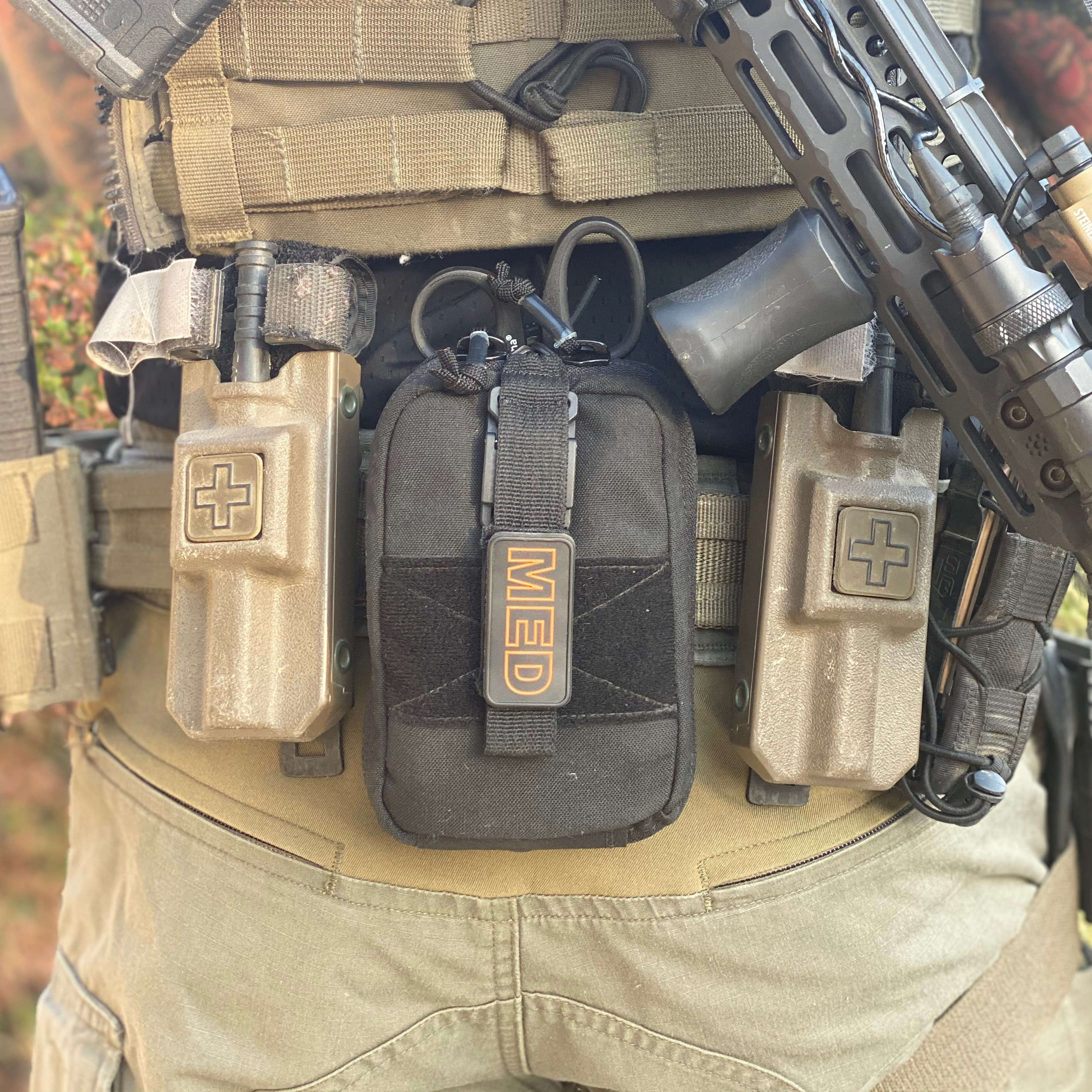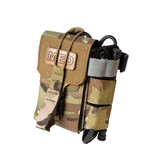How to Properly Stage and Store Your Tourniquet for Quick Access
When seconds matter, having a well-staged, easily accessible tourniquet can save lives. In high-stress situations, you don't want to be fumbling to find or unpack your tourniquet. Proper staging means that it’s not only in the right place but also ready for rapid deployment. Here’s how to ensure your tourniquet is always accessible and ready to use when you need it most.

Keep It Accessible on Your Kit
If you’re wearing tactical gear, such as a duty belt, plate carrier or chest rig, make sure your tourniquet is mounted in a location that’s easy to reach with either hand. Accessibility is crucial; you might only have seconds to act, and there’s no guarantee you’ll have the use of both hands in an emergency. Place it somewhere visible, like on the front or side of your kit, so you know exactly where to grab it. Placing the tourniquet visibly also gives others instant recognition of your medical gear, which can increase survivability in situations where you cannot render self-aid, but others nearby can provide buddy-aid. The amount of bleeding-control (BCON) trained responders and civilians has grown immensely over the years and provides a huge advantage in our communities.
“Standardizing” tourniquet placement is somewhat dated and not universally relevant unless you are part of a group that works together often and is intimately familiar with loadout commonality. Understanding the principles of accessibility and visibility is better suited for the majority of carry situations. What you carry and how you carry it is dictated by what your job and purpose are, and how you carry it should be based on being effective (and efficient) with that equipment. This may influence where you can afford to place secondary items like medical kit.
Having your tourniquet “in your cargo pocket” is not a sound plan. The day you need it is the day those pants are in the washer. Your tourniquet should be in a dedicated location on equipment you never go without. Make it part of your plans and checks to ensure that TQ is present, serviceable and accessible all the time, every time.
For those reasons, the Eleven 10® RIGID TQ Case® is an excellent choice. Its durable, hard-sided design keeps the tourniquet protected from the elements while ensuring it’s within easy reach. The RIGID TQ Case® also allows for one-handed deployment, making it a reliable option for both military, law enforcement, and other public safety professionals. It's designed to give you multiple mounting options to best suit your needs. For those that prefer a fabric pouch or have differing standards on gear policy, our Soft Side TQ Pouch is also a great option. It provides the same speed and accessibility and protects your TQ with a built-in cover.
Your Personal Tourniquet is… For You!
If your primary reason for carrying a tourniquet is in the event you need it for self-aid, it should be sized accordingly. This is done so by removing it from its commercial plastic packaging, and sizing the loop portion to be slightly looser than the thickest part of your lower extremity. Once that is done, you can refold it and place it in your carrier. This “staging” saves precious moments when seconds matter.
Avoid Hard-to-Reach Locations in Your Vehicle
While it’s important to have a tourniquet with you on the go, where you store it in your vehicle matters. Don’t bury it in the trunk or under seats where it’s difficult to find in a hurry. Instead, place it somewhere accessible, like in the glove box, center console, or attached to a visor mount. The Eleven 10® H-Strap for the RIGID TQ Case® even allows you to mount it directly to your seatbelt. If you have a designated vehicle medical kit, everyone should know where it is, and the tourniquets should be placed inside in an immediately accessible manner. This way, if an emergency occurs, you or someone else can quickly retrieve it without wasting precious time searching.
Consider Carrying More Than One Tourniquet
The reality of high-stakes situations is that anything can happen. Sometimes, one tourniquet isn’t enough, especially if there are multiple injuries or casualties. Furthermore, lower extremities often require a second one. Hope for the best, but always plan for the worst. Carrying more than one tourniquet gives you a backup if one becomes inaccessible or you need to assist others. Keep one on your person and a backup in your vehicle, so you’re prepared no matter the situation.
Remove Your Tourniquet from Its Packaging
Every second counts when responding to severe bleeding. Leaving your tourniquet in its packaging adds unnecessary steps to the process, and fumbling with plastic can cost valuable time. Although tourniquets are single-use items, they are not sterile devices. Remove your tourniquet from its wrapper and stage it in your med kit or a holder like the Eleven 10® RIGID TQ Case®, which keeps it protected from damage while eliminating the need to unpack it in an emergency. This ensures that all you need to do is grab and apply.
Use a Reliable Tourniquet Holder
A good tourniquet holder protects your tourniquet from the elements and makes sure it’s ready for quick deployment. The Eleven 10® RIGID TQ Case® is designed with these factors in mind. Its rugged, injection-molded construction is durable enough for harsh conditions, while the friction-based retention system keeps your tourniquet secure without the need for extra straps or buckles. Whether mounted on your belt, MOLLE vest, or in your vehicle, the RIGID TQ Case® ensures your tourniquet is protected and accessible. Accessories such as the Eleven 10® Shirt Shield or the RIGID TQ Case® Jacket enhance The RIGID’s ability to protect both the TQ from the elements and your clothing from wear and tear.
Conclusion
Proper staging and storage of your tourniquet can be the difference between life and death. Ensure that it’s always within easy reach, both on your kit and in your vehicle, and consider carrying more than one. Remove it from its packaging to save time, and use a reliable holder like the Eleven 10® RIGID TQ Case® to keep it secure and ready. Remember, when it comes to trauma response, preparation is key. Take a few moments now to stage your tourniquet properly—you’ll thank yourself if the time ever comes.
Explore Popular Articles
Why Every Law Enforcement Officer Should Carry a Medical Kit
In high-risk professions like law enforcement, seconds can mean the difference between life and deat...
The New Eleven 10® Responder MINI IFAK
Meet the New Eleven 10® Responder MINI IFAK: The Best IFAK for 2025 At Eleven 10® (E10), we design g...
Compressed Gauze vs. Hemostatic Gauze
The Efficacy of Compressed Gauze vs. Hemostatic Gauze in Controlling Uncontrolled Hemorrhage Unco...
Why Investing in a Quality Tourniquet Could Save Your Life
When it comes to emergency medical gear, there’s one tool that stands above the rest for saving live...

